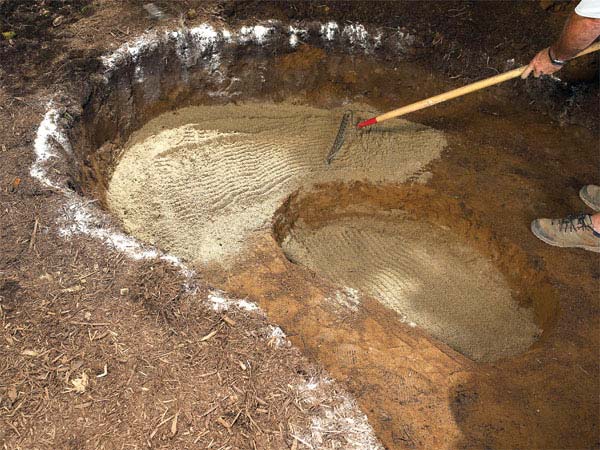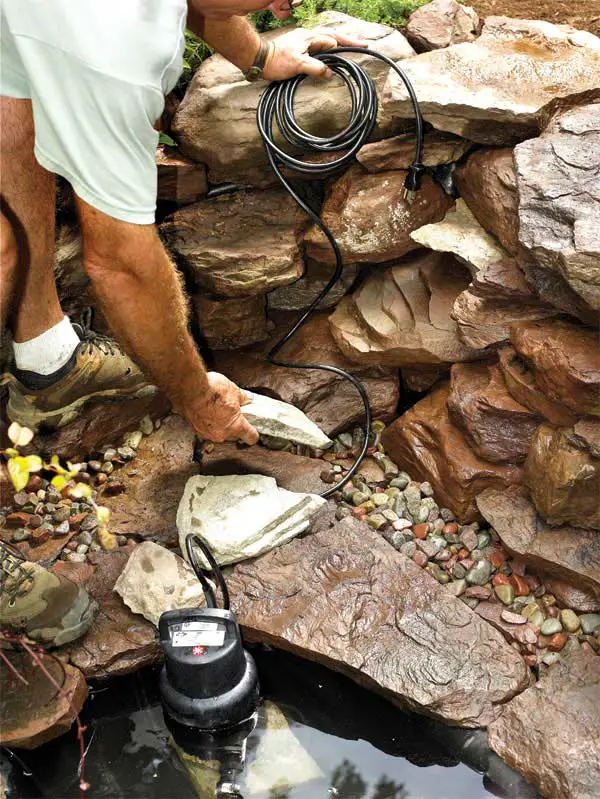How to Build a Pond to Make Your Garden a Wildlife Haven
If you enjoy the sight of water, the sound of waterfall and observing aquatic wildlife, you can have a bit of all that in a decorative backyard pond. And it’s a pretty easy project you can do yourself with the right equipment and instructions. Here’s how to build a pond to enjoy on the long summer days ahead.
You should consider what type of aquatic life you want in the pond. Is it going to be a home for goldfish or koi? Or is your main concern for the aquatic plants? Perhaps you only want the pond for the sound of a waterfall. Each type of pond will need to be planned for its specific features.
The kidney-shaped model we’re going to show you how to make features water falling over a large flat rock and spilling into the pond. This style is easier to build and can fit into the smallest yards.
The basics you need are:
- water pump
- geotextile fabric
- rubber liner
- sand
- large flat stones
How to build a pond. Location
Most ponds will be enjoyed more if they are installed close to the home. Select an area where you can see the pond year round. Ponds are great attracters of wildlife including birds and butterflies. You will want to place your pond where it will receive at least 4 to 6 hours of direct sun if you want to grow water lilies. Shade is fine for fish-only ponds. But placing a pond too close to trees means you will regularly have to clean falling leaves and other debris. Also position the pond where runoff from rain will not flow into the pond.
How to build a pond. Size
The biggest mistake that most people make is building the pond or water garden too small. A larger pond is more stable and easier to maintain. Keep in mind that a finished pond or water garden will be about 30% smaller than you visualize it. After you have laid out the shape, measure the maximum length and width. Add the depth twice to these measurements plus a foot or two for overlap and this will give you the pond liner size. Ponds built in colder areas may need more depth to keep the pond from freezing solid.
How to build a pond. Digging
Mark the outline of the pond and start digging. Excavate piling the dirt at the rear of the pond, where the waterfall will be located. In the center of the pond, dig down to form a pit where the pump will go.

How to build a pond. Lining
Now, line the hole and the pit with screened mason’s sand and rake it smooth.

On top of the sand, place the geotextile fabric and then unfold the rubber liner, which should overlap equally on all sides. Use a garden hose to fill the center pit with water to hold the liner in place.
How to build a pond. Pump
Start stacking stones on the pond floor. Set the pump on a flat stone on the bottom of the pit. Set the pump’s hose in position so that it extends from the center pit to the top of the hole. The pump’s power cord ran through openings between and under stones. Check with an electrician to ensure a safe installation of your pump and power cord.

How to build a pond. Waterfall
Stack stones at the rear of the hole to form the waterfall. That’s where the end of the hose will go. Conceal it by placing a rock on top of it. Secure the stones of the weir with waterproof black foam sealant. Also apply a thin bead of the sealant under the lip of the hose to adhere it to the spillway.
Now, use a hose to fill the pond. Once the pond is filled, plug in the pump. In a few seconds, water will gently spill out of the weir.
How to build a pond. Wildlife
If you don’t have a ground water source and are using tap water in your pond, you have to add dechlorinator for it to be a wildlife environment.
Add aquatic plants as soon as possible after constructing the pond. Aquatic plants are placed on the pond floor in special pots. You can use either no-hole plastic pots, adding a layer of gravel over the soil, or fabric pots tightly woven to keep the soil inside.
Many aquatic plants are great at using up the nutrients that would otherwise feed the algae. Some of the most effective plants include Anacharis, Water Hyacinth, Parrot’s Feather and Bacopa. Water lilies and other plants with surface leaves can be added to provide shade to approximately 66% of the surface area if in full sun. If less than full sun then less coverage is acceptable.
Begin regular use of a packaged bacteria to help maintain a clean and healthy pond. Ideally, fish should be added a few at a time over several weeks to allow the bacteria to establish in your pond.
HERE are some lovely pond designs that could fit in your yard.
Credits: popularmechanics.com, watergarden.org















